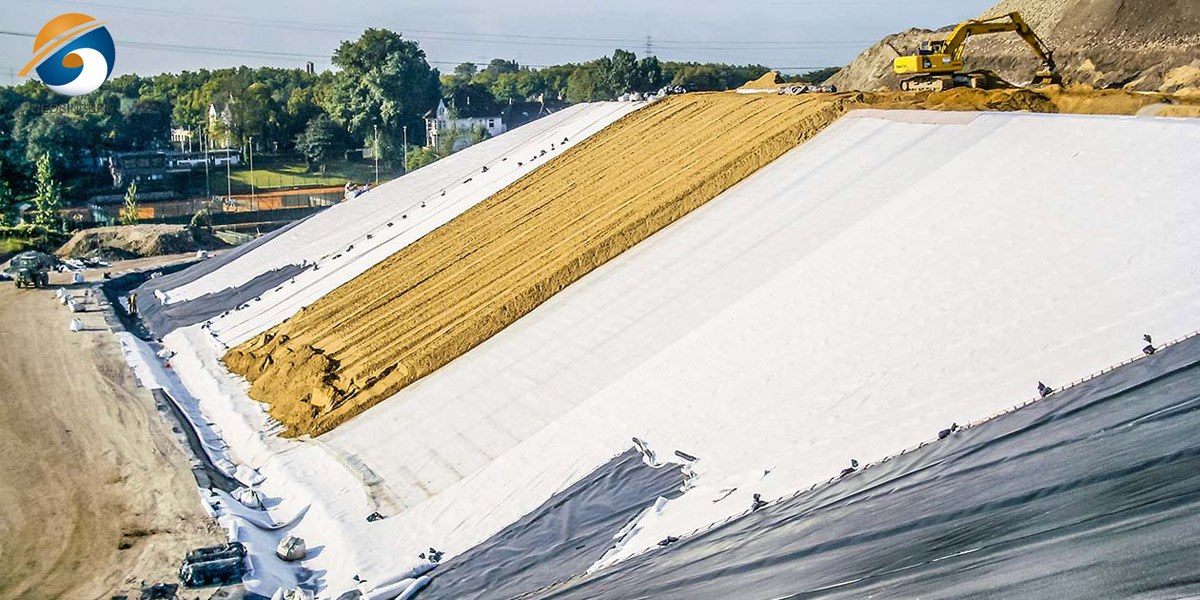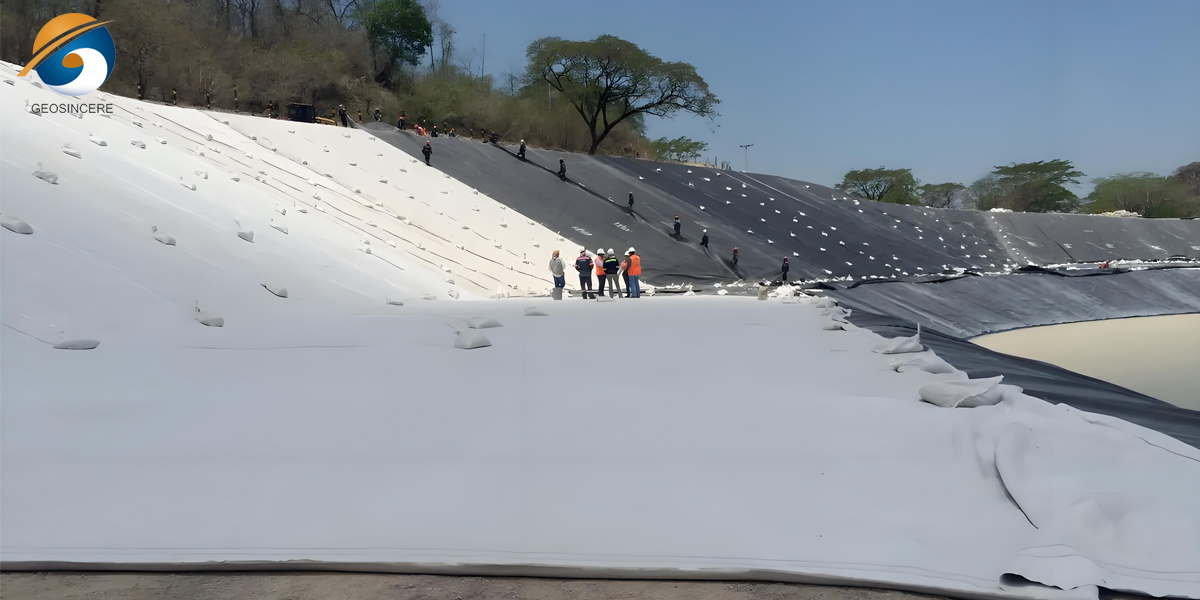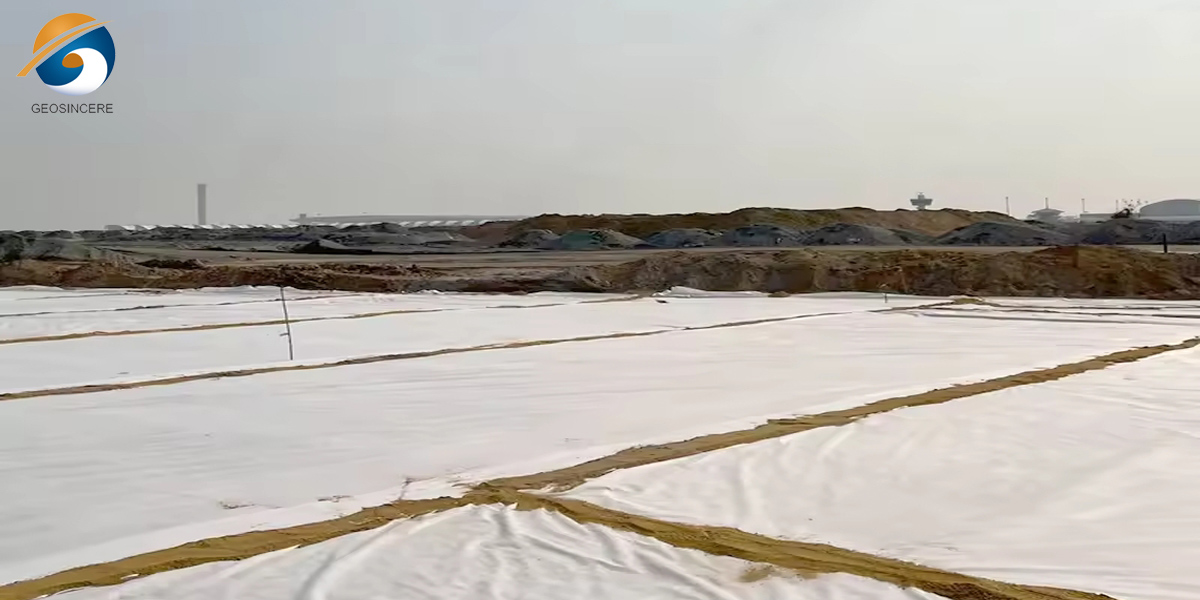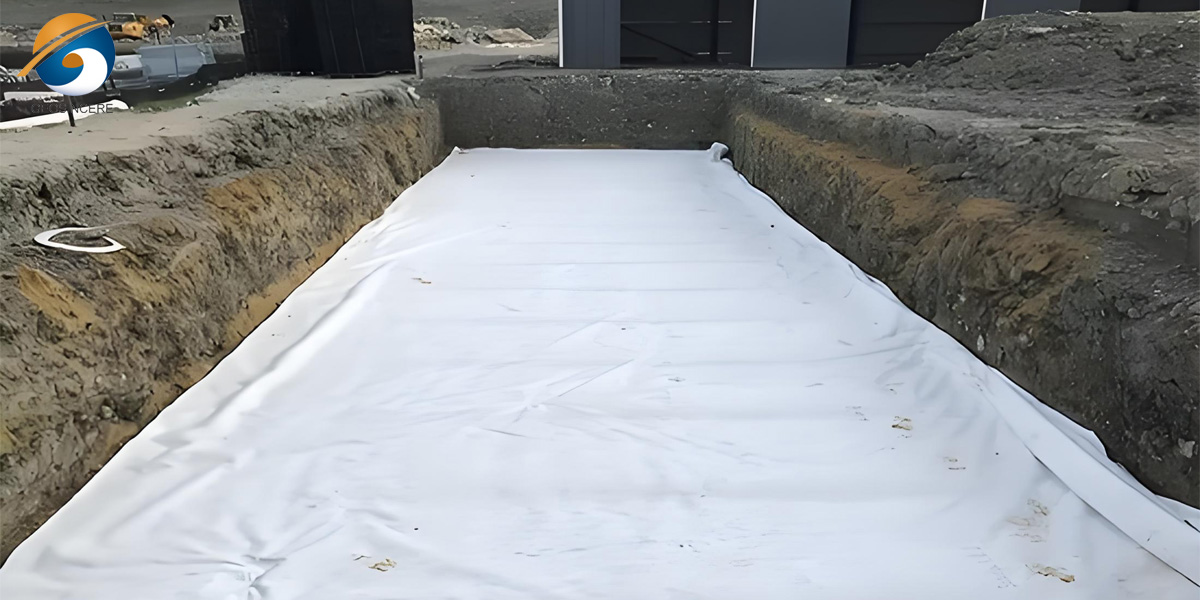The Ultimate Guide to Choosing Geotextile for Landfills
Introduction: Geotextile Material First in Landfill Construction
As world waste administration faces growing pressure, engineered sanitary landfills continue to be the predominant approach for disposing of strong waste in many countries. A qualified, safe, and environmentally sound landfill requires now not solely a well-thought-out diagram however additionally dependable high-performance geosynthetic substances to aid its structural integrity. Among these materials, geotextile play a pivotal role, at once influencing the effectiveness of the anti-seepage system, the provider lifestyles of the landfill, and long-term environmental chance control.
This final information presents a complete evaluation of geotextile determination for landfills, such as cloth types, technical parameters, utility scenarios, and provider evaluation, helping engineers, buyers, and environmental gurus in making informed decisions.
1. Why Geotextile for Landfills Are Essential?
Geotextile is especially engineered substances manufactured from artificial polymer fibers the usage of superior techniques such as needling or spunbond techniques. These versatile substances are designed to function a range of necessary features along with separation, filtration, drainage, reinforcement, and safety inside civil engineering projects.
In the context of landfill systems, geotextile play critical roles that make sure the stability, safety, and effectivity of the landfill operation:
1.1 Protection of Geomembrane Liner: Geotextile is regularly positioned below HDPE (High-Density Polyethylene) geomembrane liners to act as shielding cushion layers. This cushioning impact prevents conceivable harm to the geomembrane triggered by means of sharp or heavy overlying substances such as gravel, debris, or waste. By safeguarding the integrity of the liner, geotextile assist keep the landfill’s impermeability and environmental safety.
1.2 Leachate Filtration: Landfills generate leachate — a liquid that percolates via the waste and can raise dangerous contaminants. Geotextile feature as filtration layers that permit leachate to waft freely whilst stopping quality soil or waste particles from clogging the drainage systems. This filtration potential is imperative to make certain steady and environment friendly leachate series and discharge, thereby defending groundwater and surrounding ecosystems.
1.3 Structural Reinforcement: In landfill web sites constructed on tender or unstable subsoil, or on sloped terrain, geotextile supply much-needed reinforcement. Their tensile energy helps stabilize soil layers, distribute hundreds evenly, and face up to sliding or erosion. This reinforcement improves the normal structural steadiness and sturdiness of the landfill.
1.4 Prevention of Cross-Contamination: Acting as separator layers, geotextile forestall the mixing or migration of extraordinary substances inside the landfill layers. For example, they hold the drainage layer free from infiltration via exceptional soil or waste particles. This separation keeps the practical integrity of every layer, which is integral for the landfill’s operational effectivity and environmental protection.
In summary, geotextile serve as a multifunctional thing inside landfill systems, performing as a shielding shield, an superb drainage filter, and a structural stabilizer. Their incorporation is imperative to shield the environment, beautify landfill durability, and make certain regulatory compliance.
2. Typical Application Zones Geotextile for Landfills
Modern landfill building pursuits to create a noticeably useful and dependable anti-seepage gadget to efficiently include waste and shield the environment. To gain this, landfills are normally constructed with more than one engineered layers, every incorporating geotextiles tailor-made to precise roles:
2.1 Anti-Seepage System: This quintessential barrier layer normally consists of a aggregate of geomembrane liners and geotextiles. The geotextile serves as a protecting cushion for the geomembrane, stopping punctures or tears triggered through the underlying basis or overlying materials.
2.2 Leachate Drainage System: To make certain suitable drainage and stop water accumulation, this gadget consists of geotextiles paired with drainage nets and gravel layers. The geotextile acts as a filtration medium that approves beverages to bypass via whilst blocking off great particles, thereby preserving drainage effectivity and stopping clogging.
2.3 Slope Protection System: Landfill slopes are frequently prone to erosion and instability. Reinforced geotextiles mixed with anchoring buildings assist stabilize these slopes by way of offering tensile energy and distributing loads, minimizing soil displacement and erosion risks.
2.4 Final Cover System: The topmost layer of a landfill usually includes recycled soil, a geotextile layer, and a vegetation cover. The geotextile right here features to separate the soil from the vegetation root sector and stop soil erosion, helping wholesome plant boom and long-term stabilization of the landfill surface.
Each of these software zones needs geotextile with unique overall performance characteristics, such as various tiers of permeability, strength, and durability. Therefore, cautious decision and fabric matching are quintessential to make sure that the geotextile fulfills its supposed feature efficiently inside the landfill’s complicated layered structure.
3. Common Types Geotextile for Landfills
Geotextile is classified mainly into woven geotextiles and nonwoven geotextiles. Each has its distinct application and performance in landfill environments. Commonly used types include:
3.1 Staple Fiber Needle-Punched Nonwoven Geotextile for Landfills
- Material: Polyester (PET) or polypropylene (PP) staple fibers
- Manufacturing Process: Made by opening, blending, and carding polyester or polypropylene staple fibers of various specifications into a uniform web structure, which is then reinforced through needle punching to form a continuous and stable nonwoven fabric.
- Key Features:
Excellent water permeability and filtration performance
Effective reverse filtration and drainage capacity
Moderate reinforcement function to enhance structural stability
High resistance to chemical corrosion and suitable for complex pH environments
Soft, deformable, and adaptable to irregular surfaces
- Applications:
Underliner protection beneath HDPE geomembranes
Leachate drainage filtration layers
Layer separation to prevent intermixing of fill materials
Drainage and reverse filtration in final cover systems
3.2 Filament Polyester Geotextile for Landfills
- Material: 100% Polyester (PET) long filament
- Manufacturing Process: Produced by extruding polyester filaments directly into a web via spunbonding, followed by thermal bonding or needle punching into a consistent and stable fabric.
- Key Features:
High tensile strength and excellent puncture resistance, ideal for high-load zones
Balanced elongation to accommodate subgrade deformations
Superior bidirectional drainage capability
Outstanding resistance to acid, alkali, microbial attack, and aging, suitable for long-term burial
Broad pore size distribution and tortuous structure provide high filtration efficiency and prevent clogging
- Applications:
Used beneath HDPE membranes in heavy load or puncture-prone areas
Applied in slope zones, buffer areas, and advanced protective systems
Often combined with HDPE membranes, drainage nets, or GCL for integrated systems
3.3 Woven Geotextile for Landfills
- Material: High-tenacity polyester (PET) or polypropylene (PP) synthetic filaments
- Manufacturing Process: Interwoven warp and weft yarns into a dense two-dimensional grid structure
- Key Features:
Dense structure with very high tensile strength
Good permeability and filtration performance
Excellent chemical resistance against acid and alkali
Long-term durability and stability in buried conditions
- Applications:
Slope reinforcement and anti-slip systems in landfills
Coastal and riverbank protection projects
Soil reinforcement in soft foundations and complex geologic areas
Particularly advantageous in high fill or steep slope applications
3.4 Flat Yarn Woven Geotextile for Landfills
- Material: High-strength polypropylene flat yarn or filament
- Manufacturing Process: Flat tape weaving
- Key Features:
Extremely high tensile strength and low elongation
Strong deformation resistance
- Applications:
Slope reinforcement
Base stabilization
Heavy-load zone reinforcement
Each type serves a specific function. The selection should be based on site conditions and technical requirements.
4. Key Performance Parameters Geotextile for Landfills Selection
4.1 Mass per Unit Area (g/m²)
Common range: 200–800 g/m²
Heavier weights usually mean greater strength and puncture resistance
Underliner protection: ≥400 g/m²
Filtration layers: around 300 g/m²
Slope reinforcement (woven): ≥200 g/m²
4.2 Tensile Strength (kN/m)
Indicates load-bearing capacity under tension
For high-stress areas: ≥15 kN/m
4.3 Elongation at Break (%)
Indicates deformability; recommended range: 30–80%
4.4 CBR Puncture Strength (kN)
Represents resistance to sharp particle penetration
Typical landfill spec: ≥1.2 kN
4.5 Apparent Opening Size (AOS) & Water Permeability
AOS must match the surrounding soil particle size
Vertical permeability coefficient: ≥10⁻² cm/s for efficient leachate drainage
4.6 Chemical Resistance
Required to withstand complex leachate compositions including acids, alkalis, and organics
4.7 UV and Oxidation Resistance
For exposed or semi-exposed zones, UV stabilization or carbon black-enhanced formulations are recommended
5. Geotextile for Landfills - Recommended Selection by Application Zone
Application Zone | Recommended Type | Unit Weight | Key Focus Points |
Under HDPE Membrane | Long/short fiber nonwoven | 400–600 g/m² | CBR puncture, flexibility |
Leachate Filter Layer | Staple fiber nonwoven | 250–400 g/m² | Permeability, AOS |
Slope Reinforcement | ≥200 g/m² | High tensile strength, low elongation | |
Final Cover System | Short fiber nonwoven | 300–400 g/m² | Aging resistance, pliability |
6. Construction Tips: Use It Right
Even high-quality geotextiles can underperform if installed improperly. Key recommendations:
- Avoid Stretching and Wrinkling: Lay geotextiles naturally without tension; conform to terrain.
- Proper Overlapping: Minimum 20 cm overlap; enhance with heat bonding, sewing, or sealing tape as needed.
- Prevent Damage and Contamination: No heavy loads, tools must be blunt; avoid piercing or dragging.
- Integration with Geomembranes: Plan layer sequencing to prevent misalignment or interlayer slippage.
7. Four Supplier Selection Criteria
A quality geotextile product requires a reliable and professional manufacturer. GEOSINO recommends evaluating suppliers based on:
Export & Project Experience: Familiarity with packaging, logistics, international standards, and documentation.
Certifications & Quality Control: ISO, CE, SGS, ASTM test reports.
Customization Capability: Flexibility in width, weight, strength, and formulation.
Integrated Supply Options: Availability of geotextiles along with geomembranes, GCL, drainage nets, geogrids, etc.
8. Conclusion
In landfill construction, geotextile is more than a layer—they are essential elements of the environmental protection system and the silent guardian of the anti-seepage system.
Selecting the right type, proper specifications, and performance-compliant geotextile ensures the long-term stability and safety of landfill projects.
GEOSINCERE Geosynthetics as a global project solution provider, is committed to supplying high-performance, cost-effective, traceable geotextile materials that meet international standards. If you’re working on a landfill design or procurement task, we welcome you to contact us for technical documentation, product testing reports, or sample support.








